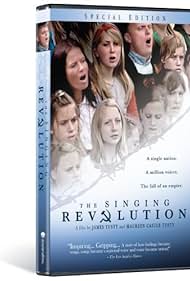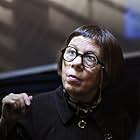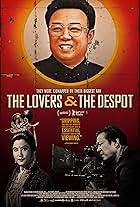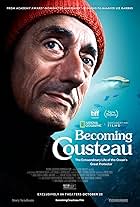THE SINGING REVOLUTION has the tag line: "A single nation. A million voices. The fall of an empire." Yes, it is a historical and real life story of the Estonians, having been under the oppression of Soviet occupation since WWII, tenaciously hanging on to their hopes and dreams of one day being an independent nation on their own again with no more foreign control. In 1991, Estonia finally gained their freedom. We are privileged to witness the Estonians' amazing historical journey that filmmakers James and Maureen Castle Tusty so thoughtfully compiled and graciously shared with us. Many hours of detailed research and interviews with a lot of Estonians involved in revealing their personal stories. The documentary is a 'must-see', including the bonus 'backstory' about how this film came to be from the viewpoint of the filmmakers. Narrator is Linda Hunt ("The Year of Living Dangerously" 1982, with Mel Gibson and Sigourney Weaver).
Historical truth: Chapter 2 (at 1947's song festival under Soviet rule): We see a sea of faces, mouths opened wide, singing together: "Land of my fathers! Land that I love!" Venno Laul, a conductor, talked about the music event: "(but) it was, and still is, primarily an opportunity to experience that we are Estonians. We have a strong culture. We are one nation. We are so few in number that we must emphasize that we exist."
Unity in singing: Chapter 3 and Chapter 6 (the 1969's 100 anniversary of the Estonian tradition of song festivals, and repeated at the summer of 1988 at Tallinn's song festival event, still under the eyes of the Soviets): People with hands holding hands straight up in the air, swaying with the singing of the (1947) 'national Estonian anthem': "Estonian I am, and Estonian I will be, as I was meant to be." "Estonian is a proud and good thing to be. Just like my great grandfathers - free." Heinz Valk, an artist, recounting the late '80s: "I was so inspired by those nights
Until now, revolutions have been filled with destruction, burning, killing, and hate, but we started our revolution with a smile and a song. Each person could go to work the next day knowing that the Estonian spirit survives" "
the main purpose of which really was to come together as a nation, and sing this one forbidden song."
Hopes and Dreams: We are taken through 'perestroika' period; the 'first' speaking out demonstration at Hirve Park; the establishment of The Heritage Society in 1987 and subsequent organized demonstrations. The gradual soaring of Estonian spirits we continue to feel for, through black and white archive footage as well as present day Estonian events in color, as they persistently discovered the fuel for change: "being together, singing together is their power."
You need not worry about the amount of talking heads / interviews on screen - the well-paced 96-minute documentary film is not at all stuffy with historical discussions - yes, devastating and touching accounts we will see and hear, like the Siberian camps (Gulag), Forrest Brothers resistance defiance, yet we actually get to hear millions singing melodic songs in Estonian, with live archive footage of people/women in their Estonian national costumes, younger sets in rock and roll gears, citizens in everyday clothing, all coming together in unison singing together with immeasurable hope and strength year after year.
I noticed a brief inclusion (towards the end of chapter 3: Post WWII 1945-1969) of school boys in a hall singing / practicing a song (in Estonian) a rather familiar tune, with teacher (in jeans) on stage snapping his fingers and swaying in rhythm (I did, too - humming along that catchy tune and realized moments later with a smile that it's a Cliff Richard hit in the sixties, "Lucky Lips"!) I appreciate the ending credit roll that included pictures of key persons with brief captions about each, while the Estonians' voices swelling in the background, and we are so happy for the independent nation of Estonia. See this film and visit its official Web site for more at 'singingrevolution.com'.








